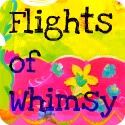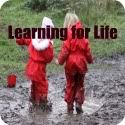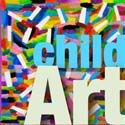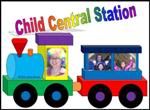For many educators, encountering change often induces physical agitation and an internal dialogue burdened with impending doom and gloom. It wrenches them free from their comfort zone and into unknown territory: akin to plummeting free-fall off the proverbial cliffs edge. In contrast, there are folks who embrace change wholeheartedly; living for the challenge of the new to ward off the boredom that can accompany trudging the same old pathway. These depictions represent the extremes of change response and are bound by the psychology of the individual. Unfortunately for the fearful, change is an inevitable part of progress; adapting and modifying practice in response to evidence-based research and aspiring toward continued improvement exemplifies quality educational provision. So, how can leaders nurture and sustain their service team as they undergo change? Well, let’s start with this quote from Bolman and Deal (2013 p.157):
“It takes more than lip service, and it doesn’t happen overnight”.
In a few brief words, Bolman and Deal establish that there is no quick and easy way to lead change. So, leaders must summon their courage and grasp the reins for the duration of the ride. For success, they must invest a significant amount of intellectual labour and emotional intelligence into the initiative. This applies equally to small scale change, such as minor adjustments to service policies, or to large scale change of a mandatory nature. Often, the onus of directing change can result in leaders feeling pressured to achieve balance between the competing demands of their day-to-day workload. In frustration, they may be tempted to surrender to a yearning for their team to just do it! However, caution is prescribed, implementing a power over or coercive approach is typically fraught with danger. For change to stick or take root, a leader must commit to doing the hard yards with their team.
Emotional display is a primary human response to change regarding matters which are of deep significance to an individual. However, beyond this is a more complex, tri-dimensional response arrangement which incorporates the Emotional, Cognitive, and Intentional; the feel-think-act components. Emotions are imbued with an individual’s beliefs and values and determine their current ways of knowing, being and doing. Consequently, emotions will inevitably form part of an individual’s meaning-making efforts when they are challenged by a change which could potentially displace their strongly held beliefs or values. In all possibility, an individual could plummet into an uncomfortable state-of-mind known as cognitive dissonance, whereby incoming evidence cannot be reconciled with their core beliefs without additional supportive assistance.
The emotions that power resistance are derived from a perceived threat to an individual or group’s identity. Resistance should always be examined through the identity lens as identity is central to being. Group identity kindles a service’s culture and determines how we do things around here. When substantial change tests an individual or group, it carries a risk to identity and makes resistance unavoidable. Resulting emotions can provoke a negative range of behavioural responses; the principal aim of which is to challenge, disrupt or overturn the change process by thwarting the objectives and destabilising the authority of the change leadership. Team members confound progress to allay their own feelings of confusion and discomfort.
Leadership theory is demanding for the novice leader to easily grasp and comprehend. There are a multitude of espoused leadership styles and approaches which in practice combine with the individual personality traits that leaders themselves bring to the task. Most leaders unconsciously utilise a combination of styles and approaches which jostle for a position of strength according to the specific scenario. In my experience, the approaches that best fit the challenge of leading change are Situational, Inspirational (Visionary), Transformational, and, Distributive (Participative) leadership approaches.
Situational Leadership:
Educational leaders need to be able to read their distinctive service context. To do so, a leader requires a high degree of emotional intelligence to be cognisant of the needs and motives of others and to distil an insight into the situational dynamics of their team. It is contextual literacy and a leader’s capacity for behavioural variability that will enable a leader to adapt their leadership approach to differing situations and change (Dubrin et.al. 2012).
Inspirational Leadership:
An inspirational leader is one who has the capacity to offer the necessary intellectual stimulation required to foster the development of a strategic vision for a service. This can be achieved through adopting the roles of a visionary enabler and a coaching mentor. The leader’s intention is best focused on rallying their team to facilitate readiness, enthusiasm and an ongoing commitment to the change initiative rather than mere compliance. The leader acts as a shepherd to guide a path-finding learning culture in which the psychological grounds for common action emerge and facilitate an internal capacity for change. It is important to keep in mind that a leader may not necessarily toil alone. It may be that the leader provides the initial impetus necessary to cultivate the change inertia momentum which is then sustained by a critical mass of individuals to eventually secure the lock-down of the change initiative.
Transformational Leadership:
Educational leaders are required to observe rigorous ethical and moral standards within their relationships and practice. This implies that transformational leadership is contingent on helping a team move beyond personal self-interest towards a focus that resides external to self. It involves striving for higher order outcomes via embracing a moral focus that transcends individualistic ambition and engages with that which is deemed favourable action in honouring the common good.
Distributive Leadership:
Distributive leadership encompasses the flattening of top-down, imposed hierarchies of control through a form of devolved leadership. In action, a distributive approach promotes shared leadership or the fulfilment of the notion of a participatory democracy. It advances a lateral distribution of power which parallels the concept of a power with rather than a power over leadership approach (Waniganayaki et.al. 2012). Distributive leadership promotes a commitment to trustworthy and respectful teamwork amidst the establishment of a learning community. A community of learners carries the potential to embody the merging of ideas and competencies to achieve outcomes of a superior quality to any singular individual endeavour.
In conclusion, it is through the adoption of an amalgam of these approaches that a change leader can somewhat confidently allow the emotions triggered by a change initiative to be played out in a safe and respectful environment; ensuring that they become explicit and textual within the change context. The development of unrestricted dialogue will assist the team in transitioning to a new way of knowing, being and doing. Such action facilitates rites of transition within a space which encourage exploration and dialogue regarding the cultural change and its conceived consequences.
Want to know more…
Bolman, L.G., & Deal, T.E. (2013) Reframing Organizations. (5th Edit.) John Wiley& Sons, Inc.: CA.
Dubrin, D., Dalglish, C., & Miller, P. (2012). Leadership. (2nd Asia-Pacific Edit.) John Wiley & Sons Australia, Ltd.
Waniganayake, M., Cheeseman, S., Fenech, M., Hadley, F., and Shepherd, W. (2012) Leadership: Contexts and Complexities in Early Childhood Education. Australia: Oxford University Press.



































































